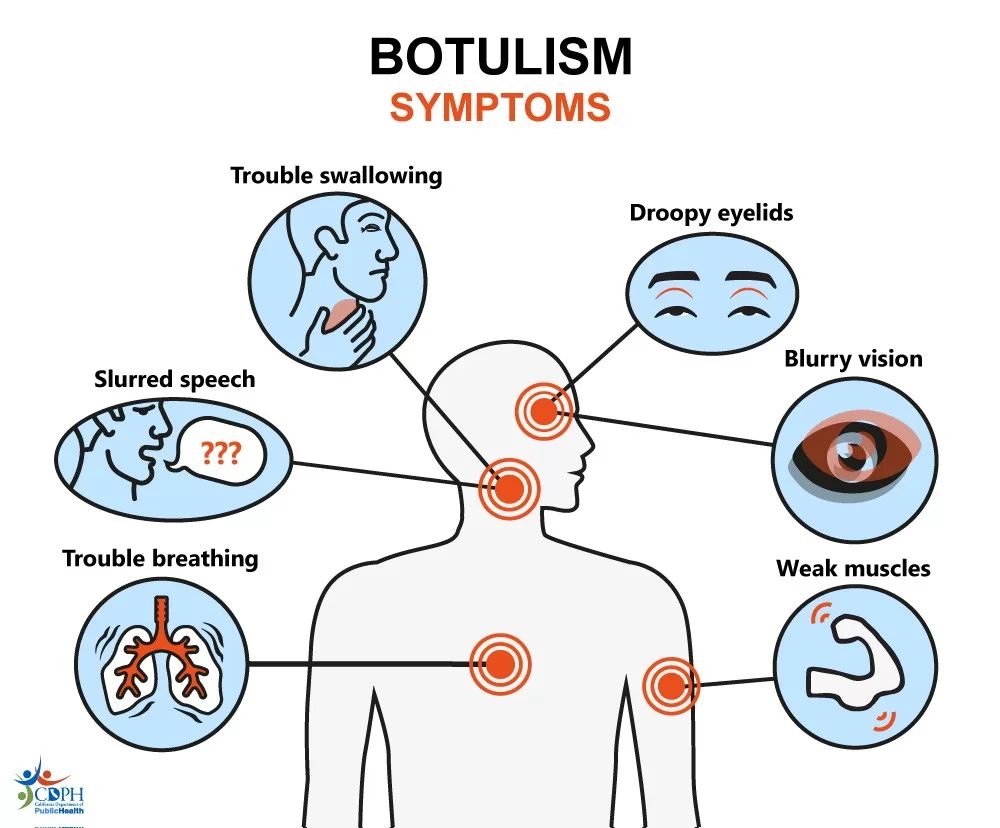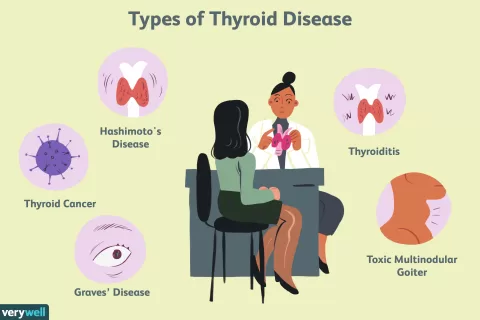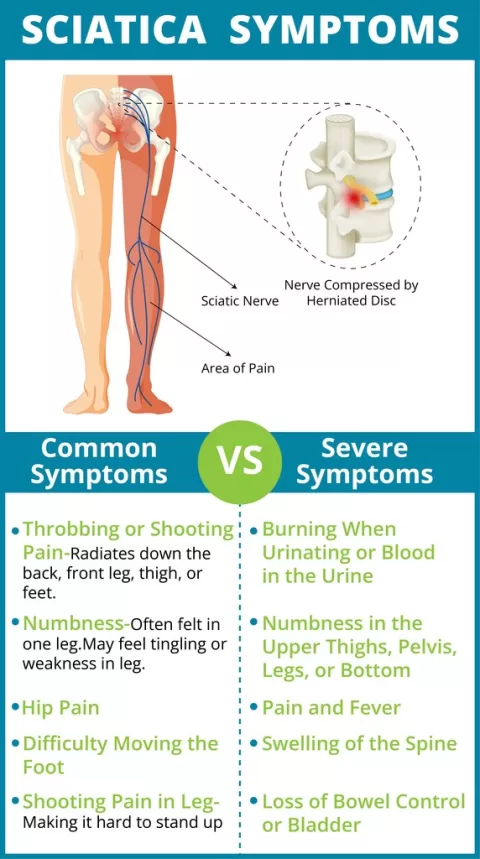Botulism is a serious illness resulting from exposure to the potent neurotoxin produced by the bacterium *Clostridium botulinum*. This potentially lethal condition can lead to severe symptoms, including muscle weakness, difficulty breathing, and paralysis. Understanding botulism symptoms and the circumstances that lead to foodborne botulism is crucial for effective prevention and treatment. In recent years, awareness has been heightened due to incidents like the botulism recall of contaminated canned foods, which underscores the importance of food safety practices. By staying informed about botulism treatment options and recognizing the risks associated with this illness, individuals can take proactive measures to protect themselves and their families.
Botulism, often referred to as a toxin-induced paralysis, can manifest through various channels including food contamination and wound exposure. The illness arises from the neurotoxic effects of *Clostridium botulinum*, which thrives in anaerobic environments, making improper food preservation a significant risk factor. Symptoms of this condition can be debilitating, affecting the nervous system and leading to respiratory failure if not treated promptly. Awareness of botulism cases, such as the recent recall of contaminated products, is vital for public health. Understanding the nuances of this illness, including preventive measures and treatment options, can empower communities to mitigate risks associated with this dangerous toxin.
Understanding the Dangers of Botulism
Botulism is a rare but potentially fatal illness resulting from exposure to the toxin produced by *Clostridium botulinum*. This neurotoxin affects the nervous system and can lead to severe health complications, including paralysis and respiratory failure. Understanding the dangers of botulism is essential for anyone who consumes preserved or canned foods, as improper food handling can lead to foodborne botulism. Awareness of the risks associated with this illness can help individuals make informed choices regarding their food consumption.
In addition to foodborne botulism, there are other forms of the illness, including wound botulism, which occurs when the bacteria enter the body through an open wound. Infant botulism is another critical form that affects babies, particularly those under one year old who consume honey. This highlights the importance of educating parents about the risks of feeding honey to infants, as even small amounts can lead to serious health issues. Overall, understanding the dangers of botulism is crucial for prevention and early detection.
Recognizing Symptoms of Botulism
Recognizing the symptoms of botulism is vital for timely intervention and treatment. Symptoms typically develop within 12 to 36 hours after exposure to the toxin. Early signs often include general weakness, fatigue, and gastrointestinal disturbances such as nausea and vomiting. As the illness progresses, neurological symptoms may arise, including double vision, blurred vision, and drooping eyelids, which indicate that the toxin is affecting the nervous system. Being aware of these symptoms can empower individuals to seek immediate medical attention.
If left untreated, botulism can lead to severe complications such as muscle paralysis and respiratory distress. This can necessitate mechanical ventilation to support breathing, underlining the importance of early diagnosis and treatment. By recognizing the symptoms associated with botulism, individuals can act quickly, potentially saving lives and preventing further health deterioration. Therefore, public education on the signs and symptoms of botulism should be prioritized to enhance awareness and prompt action.
Effective Treatment Options for Botulism
Treating botulism requires immediate medical intervention, as the illness can progress rapidly. The primary treatment involves the administration of an antitoxin, which works to neutralize the botulinum toxin circulating in the body. This treatment is most effective when given early in the course of the illness, which is why recognizing symptoms promptly is crucial. In severe cases, supportive care may be necessary, including hospitalization where patients may require mechanical ventilation if their respiratory muscles are affected.
In addition to antitoxin therapy, healthcare providers focus on supportive care to manage symptoms and complications. This may involve monitoring vital signs and providing nutrition through intravenous fluids if patients are unable to swallow. Public awareness about the treatment of botulism is essential, as it can guide individuals to act quickly in case of suspected exposure. Knowledge of treatment options not only helps in managing the illness effectively but also emphasizes the importance of seeking medical help immediately.
Preventing Botulism Through Food Safety Practices
Preventing botulism is primarily centered around safe food handling and preservation techniques. Proper canning methods are crucial in preventing the growth of *Clostridium botulinum*. Low-acid foods, such as vegetables and meats, should be canned using pressure canners to ensure that the temperatures reached during the process are sufficient to kill the bacteria and neutralize the toxin. This highlights the importance of following food safety guidelines to mitigate the risks associated with foodborne botulism.
Health experts also emphasize the need for public education on food safety practices, particularly in light of recent food recalls linked to botulism. For instance, the canned tuna recall in 2025 serves as a reminder of the potential dangers of consuming improperly processed foods. By raising awareness about safe food handling, such as avoiding the consumption of bulging or leaking cans and ensuring proper cooking temperatures, individuals can take proactive steps to prevent botulism and protect their health.
Public Health Initiatives and Botulism Awareness
Public health initiatives play a key role in promoting awareness about botulism and its associated risks. Organizations like the Centers for Disease Control and Prevention (CDC) actively engage in educating the public about the dangers of botulism, especially focusing on safe food handling practices. Campaigns aimed at increasing awareness about the symptoms and risks of botulism are essential to help individuals recognize potential cases and seek timely medical help.
Furthermore, collaboration between health agencies and local communities is crucial in addressing botulism risks effectively. Through workshops, informational pamphlets, and community events, public health officials can equip individuals with the knowledge necessary to prevent botulism. Enhanced awareness not only protects individuals but also strengthens community health as a whole, making it imperative that botulism remains a focal point of public health discussions.
Frequently Asked Questions
What are the primary symptoms of botulism?
Botulism symptoms typically appear within 12 to 36 hours after exposure to *Clostridium botulinum* toxin. Key symptoms include muscle weakness, difficulty breathing, double vision, blurred vision, drooping eyelids, slurred speech, and swallowing difficulties. Recognizing these symptoms early is crucial for effective botulism treatment.
How is foodborne botulism contracted?
Foodborne botulism is contracted by consuming foods contaminated with *Clostridium botulinum* toxin, often from improperly canned or preserved foods. The bacteria thrive in low-oxygen environments, making home canning a significant risk factor. Ensuring proper food preservation techniques can help prevent foodborne botulism.
What treatments are available for botulism?
The primary treatment for botulism involves the administration of antitoxin to neutralize the toxin and halt the progression of paralysis. In severe cases, supportive care, including mechanical ventilation, may be necessary if respiratory muscles are affected. Immediate medical attention is essential when botulism symptoms are present.
What recent developments have arisen regarding botulism recalls?
In February 2025, a significant canned tuna recall was issued due to faulty packaging that increased the risk of botulism contamination. Major retailers, including Walmart and Trader Joe’s, were affected, highlighting the importance of monitoring food safety and public awareness regarding foodborne botulism risks.
How can one prevent botulism in food preparation?
Preventing botulism requires strict adherence to food safety practices. This includes properly sterilizing canning equipment, ensuring adequate pressure and temperature during the canning process, and avoiding the use of low-acid foods for home canning. Awareness and education about *Clostridium botulinum* and its risks are crucial for safe food preparation.
| Key Point | Details |
|---|---|
| What is Botulism? | A severe illness caused by the neurotoxin from *Clostridium botulinum*, leading to muscle paralysis and potentially death. |
| Risk Factors | Includes foodborne botulism (from contaminated food), wound botulism (from infected wounds), and infant botulism (from honey). |
| Canned Tuna Recall 2025 | In February 2025, a recall of canned tuna products was issued due to faulty lids that risked contamination. |
| Symptoms of Botulism | Symptoms include muscle weakness, difficulty breathing, double vision, drooping eyelids, slurred speech, and swallowing difficulties. |
| Treatment | Immediate administration of antitoxin and supportive care are essential for recovery. |
Summary
Botulism is a serious illness that can cause severe complications if not properly understood and treated. The risks associated with botulism, such as those from contaminated food or exposure to the bacterium *Clostridium botulinum*, highlight the importance of food safety. Recent events, including the canned tuna recall, serve as a reminder of the ongoing public health challenges posed by this illness. By being aware of the symptoms and treatment options, individuals can take proactive steps to protect themselves and their families from the dangers of botulism.
The content provided on this blog (e.g., symptom descriptions, health tips, or general advice) is for informational purposes only and is not a substitute for professional medical advice, diagnosis, or treatment. Always seek the guidance of your physician or other qualified healthcare provider with any questions you may have regarding a medical condition. Never disregard professional medical advice or delay seeking it because of something you have read on this website. If you believe you may have a medical emergency, call your doctor or emergency services immediately. Reliance on any information provided by this blog is solely at your own risk.








